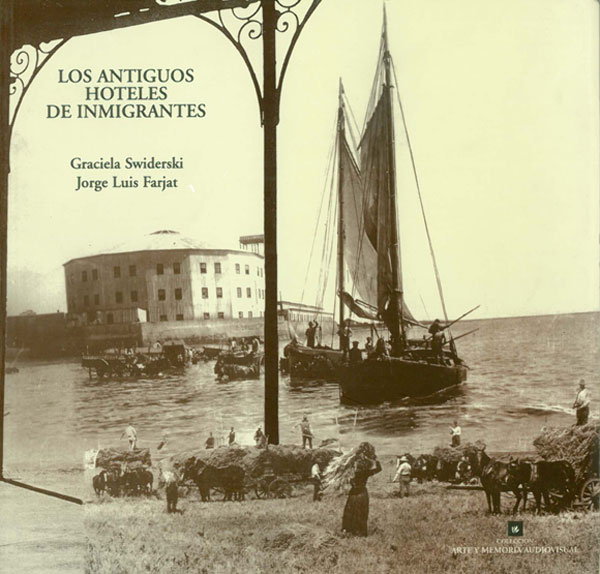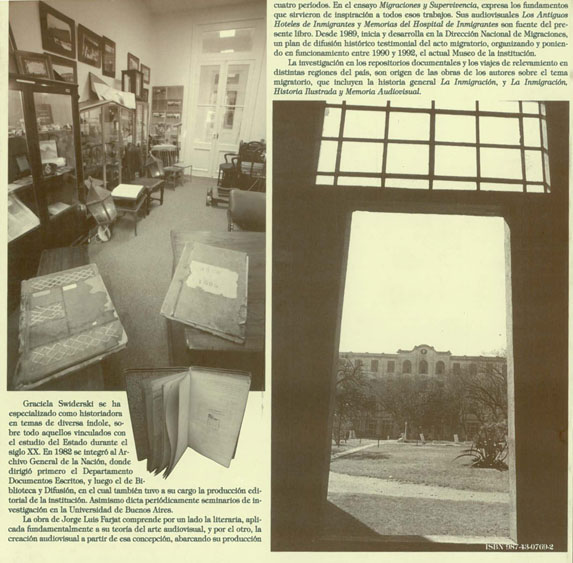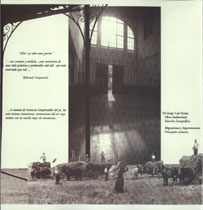The Olds Immigrants´ Hotels.
Graciela Swiderski – Jorge Luis Farjat
This book supplements the pack provided in case of two copies referred to the same thematic of old hotels, constituting both the Part II of the Volume I of the Cultured History and Audiovisual Memory. It constitutes a detailed study of each of the problems linked to the immigration: that of the temporary lodgings of foreigners until their definitive settlement.
The necessity of the authors to deepen this matter arose, precisely, of the important fact that the history of this phenomenon in Argentina, was marked exactly for the opening and closing of its last two hotels: that of the Round, in which the period was unwrapped considered as that of the migratory height, and that of the Hotel and Property inaugurated in 1911 that it connected with the cycle of the decline of the European immigration. The referred thematic use in its treatment the same outline of historical establishment of periods of the previous books, agreeing this way each chapter with the first rehearsals (1810-1852), the beginnings (1852-1880), the height (1880-1910) and the decline (1910-1955). This establishment of periods continues being still considered in this case more pertinent, before the evident confusion that exists, still in environments like that of the investigation, about the linking of each one of these temporary lodging places, with the different stages for those that it crossed the migratory process. In a superficial way, the figure of the almost mythical Hotel of 1911, it has been good to drown to its predecessor of the Round, for which passed the axis of the biggest flow in the immigration in fact. The study deepens all the aspects, even those related with the architecture and projects that served it as base, with rigorous selection of the texts that are written source. The audiovisual The Olds Inmigrants´Hotels and Memories of the Immigrants ‘ Hospital were used as sources with their respective annexed documents. In this work, the photographic content is exclusively constrained, on one hand to the reproduction of original documents as time planes, including those of projects, besides several squares with statistical of memoirs, and for the other one to that of the iconographic environment of the big hotels, for a better visualization of the panoramic geography that surrounded them, a not very well-known aspect, developed more thoroughly in the Cultured History.



